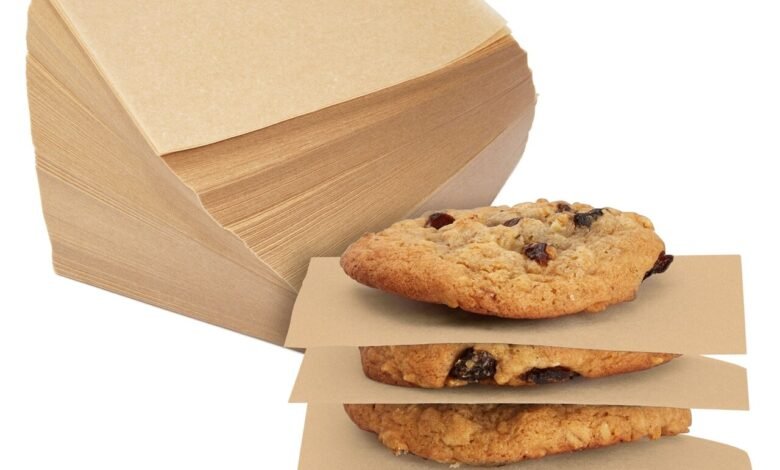
Parchment paper is a versatile and indispensable item in many kitchens around the world. Whether you’re a professional chef or a home cook, understanding the uses, benefits, and characteristics of parchment paper can elevate your cooking and baking experiences. This guide explores what parchment paper is, its various uses, how to choose the right type, and tips for using it effectively.
What is Parchment Paper?
Parchment paper is a type of paper that has been treated with an acid during production, which gives it unique properties. It is often coated with silicone, making it non-stick, heat-resistant, and moisture-resistant. This treatment allows parchment paper to withstand high temperatures, making it ideal for baking and cooking.
Unlike wax paper, which is coated with a layer of wax and is not suitable for high-heat applications, parchment paper can be used in the oven and is safe for food contact. It is typically available in rolls or pre-cut sheets, making it convenient for various culinary tasks.
The Benefits of Using Parchment Paper
1. Non-Stick Surface
One of the most significant advantages of parchment paper is its non-stick surface. Foods baked on parchment paper are less likely to stick, making cleanup easier and reducing the risk of damaging delicate baked goods. This feature is particularly beneficial for cookies, pastries, and roasted vegetables.
2. Even Cooking
Parchment paper helps promote even cooking and browning. It acts as a protective barrier, distributing heat evenly across the surface of the food. This can result in more uniform baking, which is especially important for items like cakes and cookies.
3. Easy Cleanup
Using parchment paper can significantly simplify cleanup. Once you’ve finished baking or cooking, you can simply lift the paper away, leaving behind a clean baking sheet or pan. This reduces the need for scrubbing and can save time in the kitchen.
4. Versatility
Parchment paper is incredibly versatile and can be used for a range of cooking methods, including baking, roasting, steaming, and even wrapping food. Its adaptability makes it a staple in many kitchens.
5. Healthier Cooking
When using parchment paper, there’s often less need for grease or oil. This can lead to healthier cooking options, as you can reduce the amount of fat used in your recipes without sacrificing flavor or texture.
Common Uses for Parchment Paper
1. Baking
Baking is perhaps the most common use for parchment paper. It is frequently used to line baking sheets for cookies, cakes, and pastries. By preventing sticking, parchment paper ensures that your baked goods come out perfectly every time.
2. Roasting
When roasting vegetables or meats, parchment paper can be used to line pans. This not only prevents sticking but also makes cleanup easier. Plus, it can help retain moisture, ensuring that your roasted dishes are tender and flavorful.
3. Steaming
Parchment paper can be used to create a steaming pouch for fish or vegetables. By folding the paper into a pouch and sealing it, you can trap steam and flavors inside, resulting in perfectly cooked, moist dishes.
4. Wrapping Food
Parchment paper is an excellent choice for wrapping food items. It can be used to wrap sandwiches, snacks, or baked goods for storage or transport. Unlike plastic wrap, parchment paper is breathable, which helps prevent sogginess.
5. Crafting and Other Uses
Beyond cooking, parchment paper can also be used for crafting projects, such as making stencils, origami, or art projects. Its heat-resistant properties make it suitable for various crafting applications.
How to Choose the Right Parchment Paper
1. Consider the Size
Parchment paper is available in various sizes, from rolls to pre-cut sheets. If you do a lot of baking, a roll may be more convenient, as you can cut it to fit any size pan. For occasional use, pre-cut sheets may be more practical.
2. Check for Silicone Coating
Most parchment papers are treated with silicone, which enhances their non-stick properties. When selecting parchment paper, look for products that specify they are silicone-coated for the best results.
3. Look for Oven-Safe Ratings
Ensure that the parchment paper you choose is rated for oven use. Most parchment papers can withstand temperatures up to 420°F (215°C), but it’s always a good idea to check the packaging for specific temperature limits.
4. Explore Specialty Options
Some parchment papers come in specialty varieties, such as bleached or unbleached. Unbleached parchment paper is a more natural option, while bleached paper has a whiter appearance. Choose based on your preference and any dietary considerations.
Tips for Using Parchment Paper Effectively
1. Prepping Your Pans
When using parchment paper to line a baking sheet or pan, consider lightly greasing the pan first. This can help the parchment stick and prevent it from sliding around during the cooking process.
2. Ensure Proper Fit
Cut the parchment paper to fit the size of the pan or sheet you are using. If you’re using a roll, you can easily tear off the desired length. For pre-cut sheets, ensure they cover the entire surface area to prevent sticking.
3. Avoid Direct Contact with Flames
While parchment paper is heat-resistant, it should not come into direct contact with flames or heating elements. This can cause the paper to catch fire. Always place it on the middle rack in the oven to ensure safe use.
4. Double-Layering for Extra Protection
For particularly sticky foods, consider double-layering the parchment paper. This provides an extra barrier against sticking and can be especially useful for delicate items like meringues or sticky cookies.
5. Reuse When Possible
If your parchment paper is not heavily soiled, you can often reuse it for multiple baking sessions. Simply wipe off any residue and store it for future use. However, if it’s grease-stained or torn, it’s best to use a fresh piece.
Storage and Care of Parchment Paper
Storing parchment paper is straightforward. Keep it in a cool, dry place away from moisture. If you buy parchment paper in a roll, it can be stored upright or laid flat. For pre-cut sheets, a drawer or container works well to keep them organized.
Avoid exposing parchment paper to direct heat sources or flames, as this can lead to burning. Always check for any signs of damage before using it, and dispose of any torn or damaged pieces.
Environmental Considerations
Many consumers are becoming increasingly concerned about the environmental impact of their kitchen supplies. Parchment paper can be a more eco-friendly option compared to aluminum foil and plastic wrap, especially if you choose unbleached varieties.
Some brands offer compostable parchment paper, which breaks down more easily in the environment. If sustainability is a priority for you, look for these options to minimize your environmental footprint.
Conclusion
Parchment paper is a versatile and essential tool in the kitchen, offering numerous benefits for baking, cooking, and food preparation. Its non-stick properties, ease of cleanup, and ability to promote even cooking make it a favorite among both amateur and professional cooks alike. By understanding how to choose and use parchment paper effectively, you can enhance your culinary creations and simplify your cooking processes.
Whether you’re lining a baking sheet for cookies, wrapping fish for steaming, or crafting a unique dish, parchment paper is an invaluable ally in the kitchen. Embrace its versatility, and you’ll discover countless ways to enhance your cooking experience while enjoying the benefits it brings.



